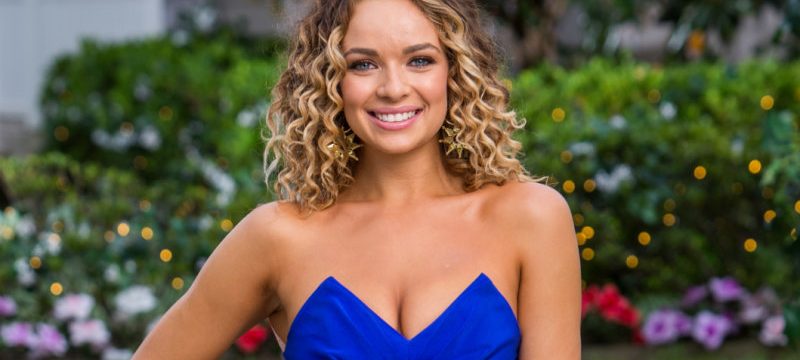It’s the reality-TV shuffle and it’s a game that’s played several times a year. One crop winds up on commercial free-to-air TV, amid on-screen tears and cheers, and a new batch begins. In recent weeks, MasterChef, The Voice and House Rules folded their tentpoles and Survivor, The Block, Australia’s Got Talent and The Bachelor cranked up theirs.
Not all reality-TV shows are created equal: some are better than others. Viewers who have an automatic aversion to the genre believe there’s no such thing as good reality-TV. But they’re wrong. Just as there are good and bad dramas and comedies, there are good and bad reality shows.
Jonathan LaPaglia hosts the new season of Australian Survivor.Credit:Nigel Wright
There are productions that display a more effective appreciation of pace, tone and storytelling techniques. Some are more visually engaging. Some hit the spot with the casting of judges and contestants, while others struggle to get that critical balance right. And, as with all stories, reality-TV requires conflict, because otherwise, as in comedy or drama, it seems as if there’s nothing important at stake. Sometimes that conflict is compelling; at other times, it’s so clumsily contrived as to be laughable.
In the latest crop, Survivor gets many of the key elements right. Now into its fourth season, Ten’s version has nailed the visual spectacle of the challenges and the crucial elements of casting and conflict. Again framed as a Champions vs Contenders face-off, the season sets up an opposition not only between the competing tribes but also between people who’ve proven their ability, and been rewarded for it, and those who haven’t yet had their time to shine.
“A contender is an underdog,” explains Shaun Hampson in the opening episode. “They’ve got something to prove. It’s about a nobody becoming a somebody.” The champs are also a bit older, so there’s a generational aspect to the showdown.
Survivor has the visual asset of the tropical island setting, but how many shots of palm trees, waves and exotic critters can be reasonably inserted? So its additional asset is the scale and ingenuity of the challenges. Many of the battles that determine which team will win rewards or immunity are designed to inspire a sense of awe. And the producers are canny enough to vary these exercises, which range from basic – two people wrestling over a bag in a sandpit – to wonderfully elaborate obstacle courses.
Meanwhile, The Bachelor works to create a fairytale world with its country mansion. (I’ve always wondered what the dormitory area off-screen looks like: is it bunk beds and cramped shared bathrooms?) Insofar as the public display areas go, it’s all candles, flowers, fairy lights and lanterns, although we know that there’s something rotten festering beneath those carefully curated surfaces. The Bach is all about conflict: it’s a simmering cauldron of catty competition, rationalised by the hope of finding True Love.
This year, The Bach is going for brains over brawn, choosing astrophysicist Matt Agnew in marked contrast to 2018’s rugby player, Nick “Honey Badger” Cummins. It’s early days, but you’ve gotta give a red rose to the show for one of the best exchanges of the year to date. As the limos disgorged 20 fresh hopefuls, the women walked along the candlelit path in their strappy heels to introduce themselves to this year’s prize catch and to try to make an indelible first impression. Some brought gifts or spoke in foreign languages, one organised a campfire, one wore a wedding dress.
“So, what do you do?” inquired blonde, curly haired Abbie of tall, dark and handsome Matt.
“I’m an astrophysicist,” he modestly replied.
“I’m a Gemini,” the property analyst gaily responded.
Love it.
Scott Cam with a new batch of “Blockheads”. Credit:Nine Entertainment
Over on The Block, a locally created format entering its 15th season, we’re seeing another St Kilda renovation project that will be, yes, “the toughest Block ever”. We’d expect nothing less. The former Oslo Hotel will be converted into five, three-storey neo-Georgian town houses, each with a floor-space double that of the apartments in last year’s popular Gatwick series. So the competing couples are in for a rough time.
Magician and serial reality show contestant Apollo on Australia’s Got Talent.Credit:Seven Network
Even allowing for all the annoying and unnecessary recapping, this production ticks along like a well-oiled machine. Still, it does often seem as if the largely anonymous army of tradies does a heap of the heavy lifting while the contestants busy themselves with decisions about light fittings, art work and throw cushions.
While Survivor, The Bachelor and The Block have become fixtures, Australia’s Got Talent is a test run this year for Seven, and it’s the format that refuses to die. Seven did six seasons of it (2007-12), Nine tried it twice (2013 and 2016) and here it is again. AGT is an old-fashioned talent quest jazzed up for a new age. This is the place to see a nine-year-old guitar wiz, an escape artist, a sword swallower and 69-year-old Pricasso.
At the judges’ desk, alongside showbiz trouper Shane Jacobson, radiant stage and screen star Lucy Durack and ubiquitous Manu Feildel, is former Pussycat Doll and token import Nicole Scherzinger, who seems to have a limited vocabulary. Her responses run the gamut from “Oh my goodness” and “Oh my gosh, I cannot believe my eyes”, to “That was insane”, although she has now also contributed the expression “face hole” to prime time.
AGT aims for spectacle, surprise and variety. Sometimes it succeeds, but the wow factor is too rare to make it must-see TV.
But wait, there’s more. Still to come is Ten’s The Masked Singer, a format created in South Korea. It will include Lindsay Lohan on the judges’ table, which is likely to attract at least initial curiosity.
Overall, the tribe has spoken and FTA’s love affair with reality-TV looks unlikely to wane any time soon, even if some of them are definitely more accomplished and addictive than others.
Source: Read Full Article



